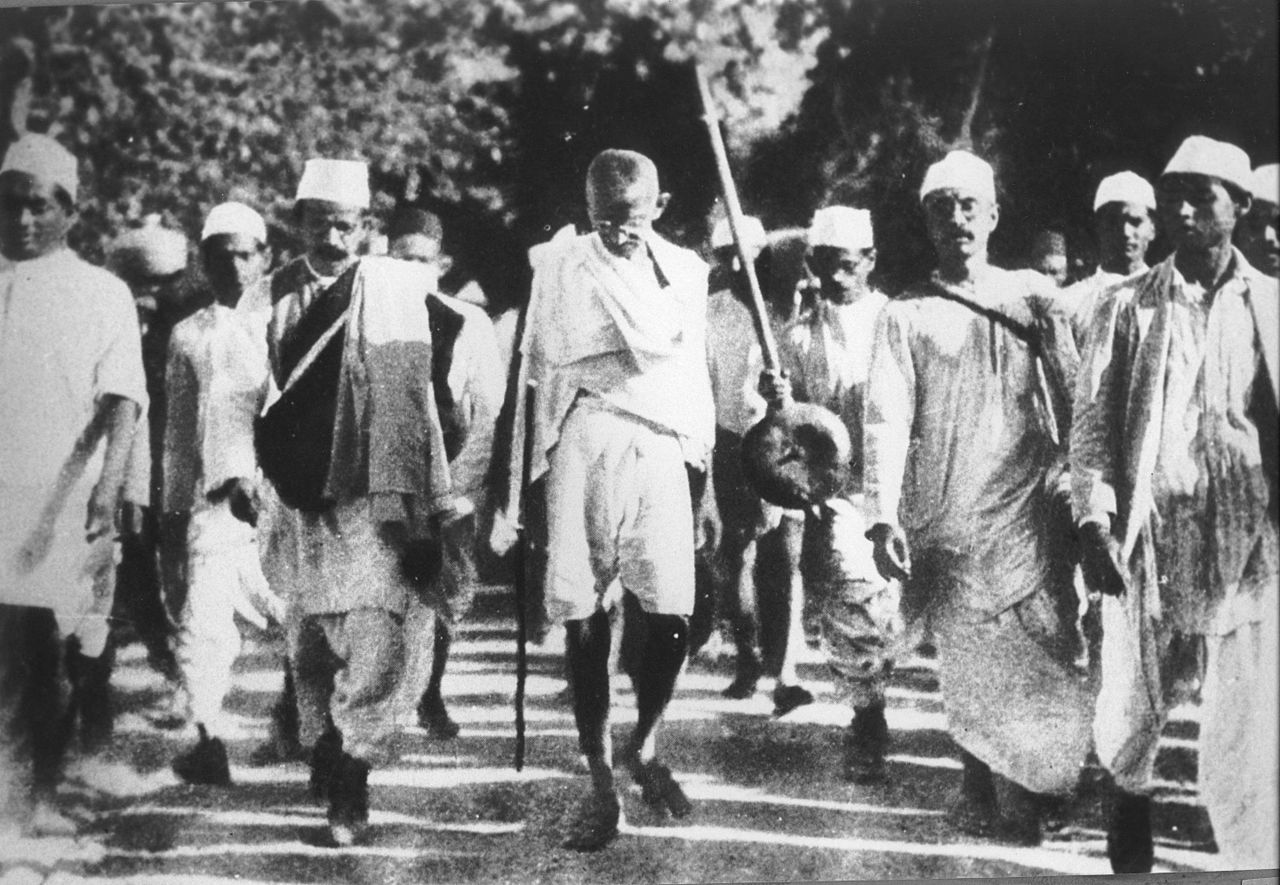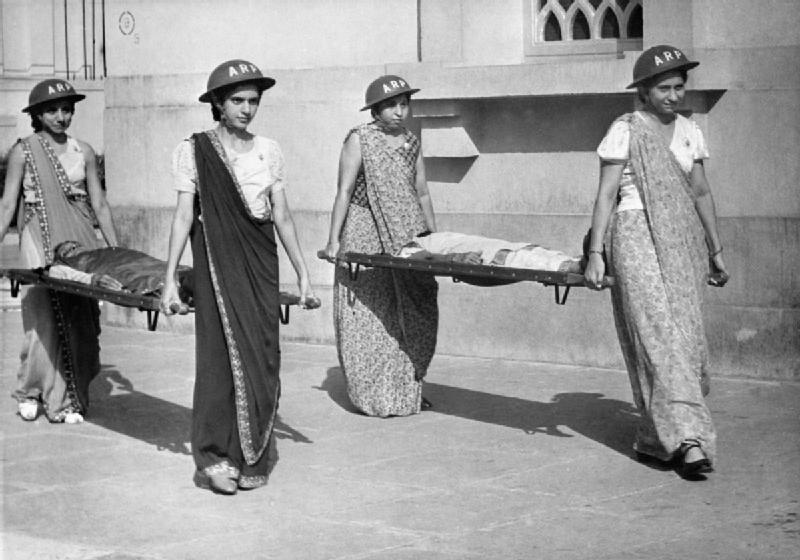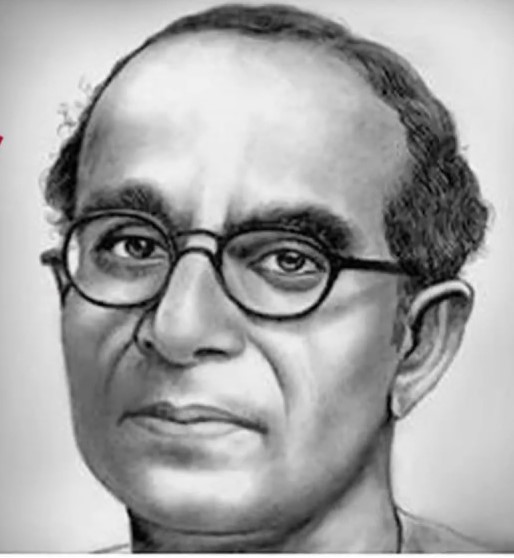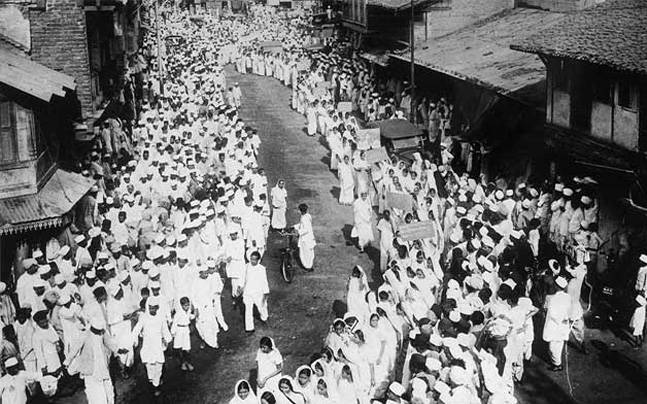Bombay (now Mumbai), MAHARASHTRA :
Both “Quit India” and “Simon Go Back” slogans were coined by a lesser-known hero of India’s struggle for freedom, Yusuf Meherally. Here’s his untold story.
India’s fight against colonial rule was a long drawn out battle that gained momentum in several phases since it started in the early 20th century. Examples of these phases are the Non-Cooperation movement of 1920-22 and the Civil Disobedience movement of 1930-32. However, the one rallying call that gave the country its ultimate push towards complete independence was “Quit India”.
By far the strongest and most vociferous appeal made by the Indian National Congress (INC), “Quit India” asked the British, loud and clear, to leave India once and for all. Interestingly, contrary to popular belief, it wasn’t Mahatma Gandhi who coined this iconic slogan.
Both “Quit India” and “Simon Go Back” slogans were coined by a lesser-known hero of India’s struggle for freedom, Yusuf Meherally.
The son of a well-to-do businessman, Yusuf Meherally was born in Bombay on September 3, 1903. Fifty years earlier, his great-grandfather had established one of Bombay’s first textile mills and the family had prospered ever since.
As a young boy, Meherally was curious about the nationalist movements developing around him. While he was in high school, he would spend much time reading about the revolutionary movements of the different nations and the role youth had played in them. Having witnessed his family’s upper class prejudices all his life, the sensitive boy was also deeply affected by the struggles of the working class.
Having soon become a staunch supporter of the freedom struggle, young Yusuf was looked upon as an embarrassing renegade by his pro-British family. Unaffected by their disapproval, he joined the movement immediately after finishing his schooling from Bharda High School.
After earning a B.A. in History and Economics from Elphinstone college, he was studying law at the Government Law College in February 1928 when Simon Commission reached Bombay. A group of seven British Members of Parliament, the Simon Commission had arrived in India to suggest constitutional reforms but didn’t have a single Indian member. This unfair and insulting decision had led to much anger and disappointment among Indians.
Having founded the Bombay Youth League the very same year, Meherally immediately organised a protest against the Simon Commision. He had initially planned an ambitious expedition on boats to meet the members at sea itself, but the plan was leaked and the police took stringent steps to prevent it from happening.
Undaunted, Meherally and other young men dressed up as coolies to get access to the Bombay port where they greeted the members of the commission with black flags and the slogan “Simon Go Back”. The resolute demonstrators were lathi-charged thrice but they did not budge an inch. As the news of the demonstration spread like wildfire, establishments across the city began observing spontaneous hartals.
Overnight, Meherally’s courage and slogan were on everyone’s lips, including Mahatma Gandhi’s. Not only had he dared to shout his slogan to the face of a powerful British politician, he had also defied the directions of his political seniors who counselled inaction.
Threatened by his growing popularity and radical views, the British debarred him from practising law to the consternation of his family. The rarity of this action can be seen from the fact that though several nationalist leaders were lawyers, none of them had been barred from practising law.
Two years later, when the Civil Disobedience movement was launched, Meherally and his band of young volunteers worked tirelessly to keep the morale of the public up in face of the severe repressive measures that the British unleashed.
As INC’s prominent leaders courted imprisonment and went to jail during the Salt Satyagraha, Meherally kept the movement running till he himself was arrested in 1930 and sentenced to four month’s imprisonment.

In 1932, Meherally was again arrested for conspiracy and sentenced to a two-year term in the Nasik prison. It was here that he met and interacted with the radical socialist leaders of the freedom struggle.
After his release in 1934, he joined hands with Jayaprakash Narayan, Asok Mehta, Narendra Dev, Achyut Patwadhan, Minoo Masani and others to found the Congress Socialist Party. The organisation hoped to transcend communal divisions through class solidarity and bring about economic empowerment through decentralized socialism (i.e farmer co-operatives and trade unions).
In 1938, Meherally led the Indian delegation to the World Youth Congress in New York before attending the World Cultural Conference taking place in Mexico. Here, he was struck by the lack of literature on contemporary issues in India when compared to the West. Determined to fill this gap, he authored a series of books titled ‘Leaders of India‘ that focused on current topics and translated them to Gujarati, Hindi and Urdu.
Here is an excerpt from the foreword he wrote:
“The rise of the pamphlet and the booklet as a powerful weapon for the spread of ideas has been truly remarkable. During my visits to these continents (US and Europe) I was greatly impressed by the part that such brochures play in moulding public opinion. In Europe and America there exists a wealth of topical literature that is in striking contrast to its scantiness in India.
The Current Topics Series of Padma Publications is an attempt to meet this need. The idea is to publish every few months a booklet on a subject of topical or special interest having regard to present-day controversies and their bearing on the future. The series will not be restricted to political questions only. Every title will be published in a pleasing format, at a price within the reach of all.”
In the next few years, Meherally was arrested several times for defying prohibitory orders and participating in Individual Satyagraha (launched by Gandhi to affirm one’s right of speech and oppose the British decision to involve India in World War II without the consent of its people).
In 1942, he was still in Lahore Jail when he was nominated by INC for the election to Bombay Mayoralty.This nomination was personally backed by Sardar Vallabhbhai Patel who knew that Meherally belonged to that rare breed of leaders for whom personal gratification meant ensuring the well-being of fellow countrymen.
Released from prison to participate in the elections, Meherally won comfortably, becoming the youngest Mayor in the history of Bombay’s municipal corporation. During his tenure, he became immensely popular among the public due to his dedication towards ensuring effective civic service.
One of Meherally’s first steps as a mayor was to introduce a quick dispatch system for files and deal with slacking officials with an iron hand. Other than personally attending to citizens’ complaints on civic issues, he took the unprecedented decision of refusing to pay municipal money for the British Government’s Air Raid Precautions (ARP) scheme.
The ARP scheme was a programme initiated for the protection of civilians from the danger of air raids. It included the organisation of ARP wardens, messengers, ambulance drivers and rescue parties who would liaison with police and fire brigades in case of an air raid.
Earlier, Bombay’s municipal corporation used to pay Rs 24 lakh to the British government for the ARP scheme but an adamant Meherally argued that the defense of the city should be in the hands of those who would remain on the scene no matter what and not the British who would probably withdraw in case of an attack (just like they had done in Malaya and Burma).
This led to the organisation of the People’s Volunteer Brigade in Bombay and the city became the only one in India where the municipal corporation was allowed to run the ARP scheme.

IND 1492
Part of
WAR OFFICE SECOND WORLD WAR OFFICIAL COLLECTION
No 9 Army Film & Photographic Unit
All this while, he continued being involved in the country’s fight for freedom. On July 14, 1942, INC’s working committee had met at Wardha and demanded complete independence, failing which a massive civil disobedience movement would be launched.
Soon after, at a meeting in Bombay, Gandhi conferred with his closest associates on the best slogan for the movement. C Rajagopalachari suggested ‘Retreat’ or ‘Withdraw’ but it didn’t find much favour with the leader. It was Meherally who then came up with the succinct phrase — ‘Quit India’ — that got Gandhi’s approval.
In preparation for the nationwide movement, Meherally published a booklet titled Quit India (that sold out in a matter of weeks) and got over a thousand ‘Quit India’ badges printed to popularise the slogan. On August 8, 1942, Gandhi delivered his powerful Quit India speech at Mumbai’s Gowalia Tank Maidan. The next day, he was arrested along with practically the entire INC leadership.
Realising that these arrests had created a vacuum in the communication between the leadership and the masses, Meherally immediately mobilized his socialist colleagues – Aruna Asaf Ali, Ram Manohar Lohia and Achyut Patwardhan – to take charge of the Quit India movement while hiding underground, just before he himself was caught and put in prison.
It was during this last tenure in prison that Meherally suffered a debilitating heart attack. The prison authorities offered to shift him to St George Hospital for special treatment but the principled man demanded that two other ailing freedom fighters should also get the same facilities. When the authorities refused, he chose to remain in prison.
Over the following few months, freedom fighters across India responded with waves of civic rebellion despite the violent backlash from the British authorities. While the Quit India Movement did not result in immediate attainment of freedom, it did indeed create the massive pressure that resulted in India bidding farewell to the British just three years later.
By the time he was released in 1943, Meherally’s health had deteriorated sharply but he continued to contribute to the cause of Indian independence. The selfless leader was over the moon when his beloved motherland finally unshackled the chains of colonialism and awoke to freedom on August 15, 1947.

However, the years of struggle had taken its toll, rendering him weak and bed-ridden, though only physically and not in spirit. Even from his hospital bed, he continued to work to highlight India’s vibrant diversity and rich heritage.
In October 1949, Meherally organised a one-of-its-kind exhibition that displayed more than 200 pictures and paintings that traced the evolution of India’s freedom struggle since 1857. He also organised several cultural and literary events at Bombay’s famed Kala Ghoda, inviting Indian personalities who were legends in their respective fields.
On July 2, 1950, Yusuf Meherally passed away at the age of 47, his death rousing the same passion in the public as his slogans. Shocked at the loss of their beloved leader, all of Bombay was in collective mourning. The next day, as the clock struck noon, buses, trams and trains across the city stopped for a few minutes.
Almost all schools, colleges, shops, factories and mills remained shut. The Bombay Stock Exchange, an iconic symbol of the city’s financial strength, witnessed no trading though officially open for business. The city that never stopped, Bombay stood still in the memory of the man who had literally given his lifeblood for the city’s well-being and the country’s cause.
source: http://www.thebetterindia.com / The Better India / Home> Freedom Fighter> History> Lede / by Sanchari Pai / September 28th, 2017












